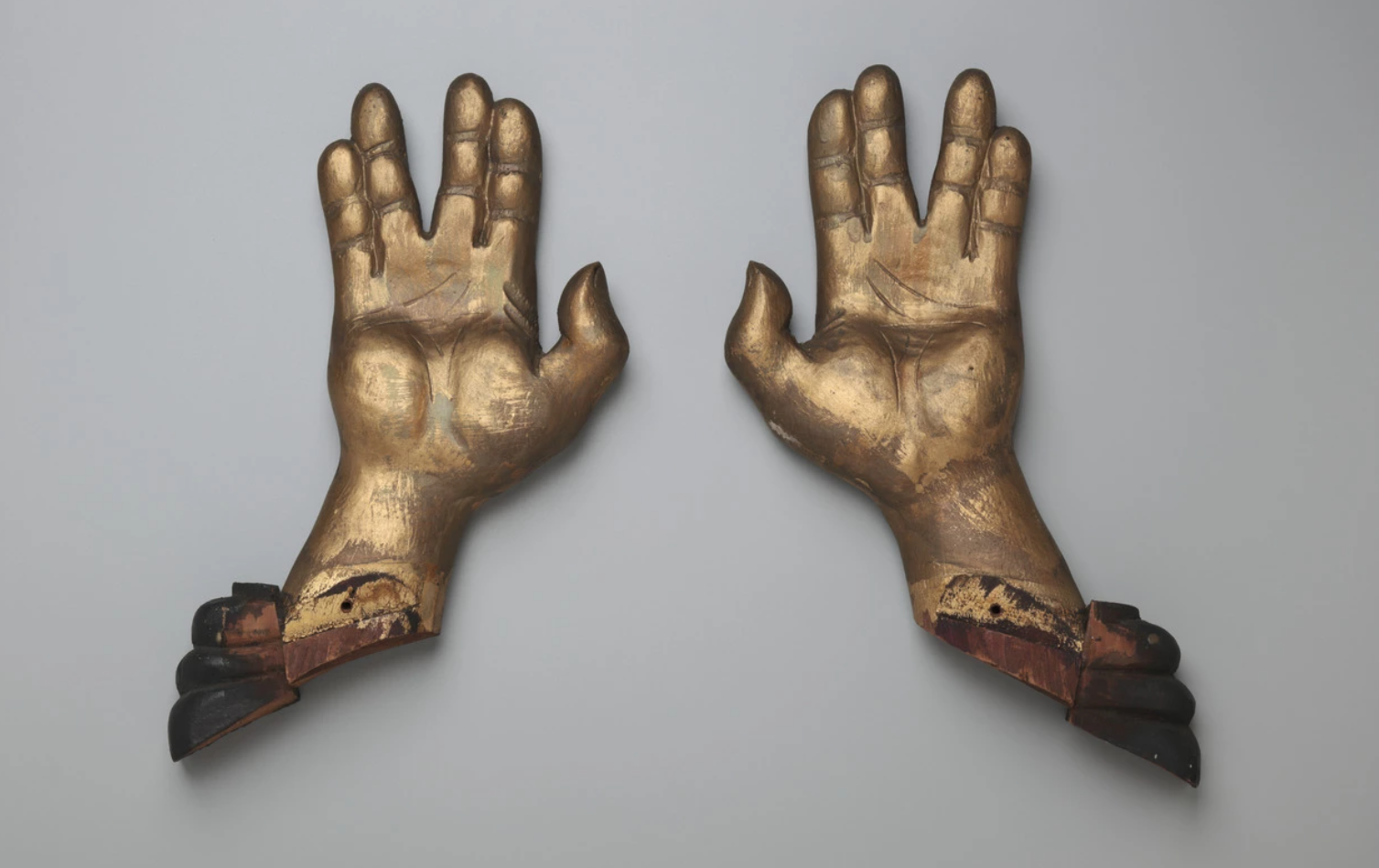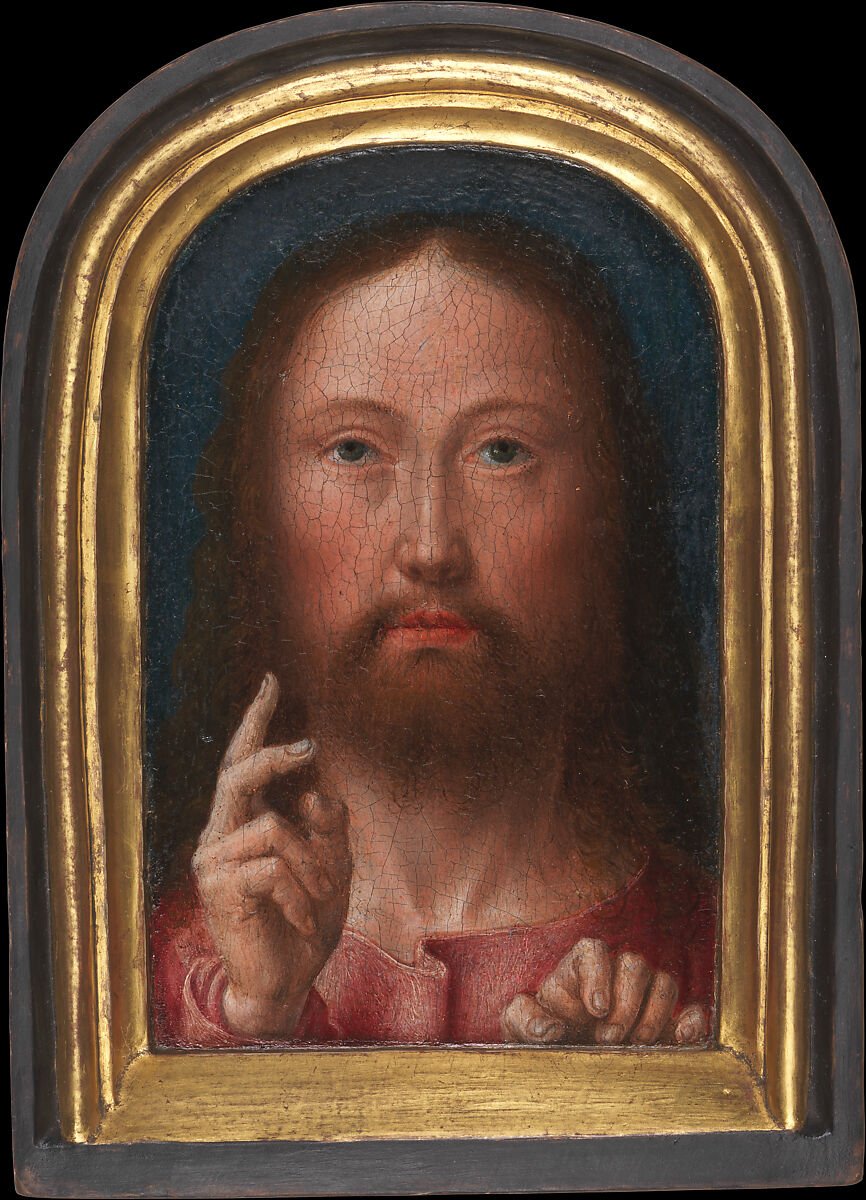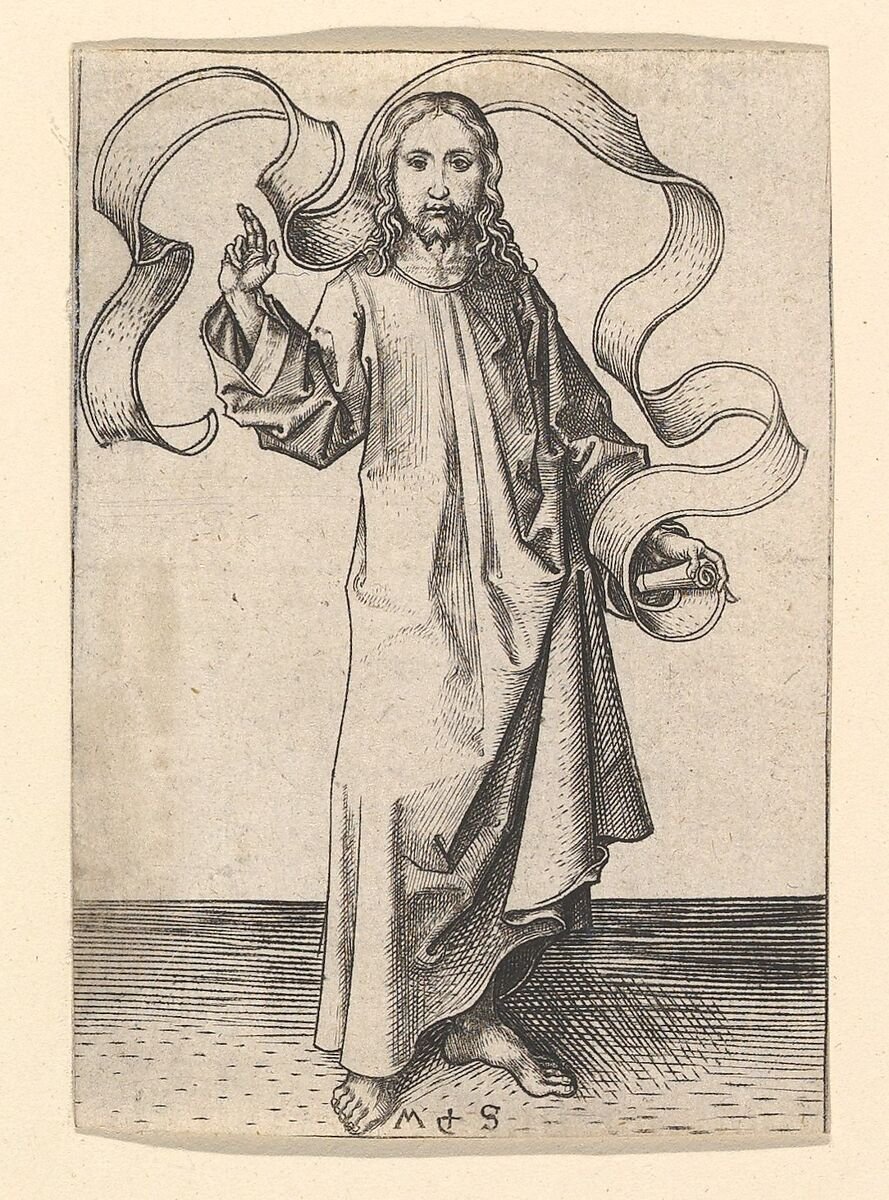Did Mr. Spock* base the Vulcan salute on a Jewish blessing?
Comparing Religious Hand Gestures in Judaism and Christianity
The short answer is “yes,” but that wouldn’t be much of a blog post, now would it?
So let’s take a trip back to the 1960s, when Leonard Nimoy* was cast as Mr. Spock in the first season of Star Trek. For the uninitiated, Mr. Spock was the half-human/half-Vulcan Science Officer and the only human-alien hybrid aboard the U.S.S. Enterprise.
His standard greeting “Live long and prosper” was accompanied by a hand gesture now known as the Vulcan salute in which the hand would be raised with the palm facing forward and the fingers would be spread to make a “V” sign.
Did Nimoy invent this gesture as part of the role?
Yes, Leonard Nimoy has stated that he improvised it during a rehearsal, and it appears that the gesture was directly influenced by (or borrowed from?) his Jewish religious upbringing.
In Judaism, the Cohanim (or Kohanim) were members of a priestly tribe who all claim direct descent from Aaron. Given this status, they were the only people who were permitted to recite a special prayer called the Birkat Kohanim (a.k.a. Nesi’at Kapayim) to bless the congregation.
In administering the blessing, the Kohen (or Cohan) would cover his head with his prayer shawl and extend both hands overhead while spreading the fingers of both hands into what we are now calling “the Vulcan salute”. Positioning the fingers in this way resembles the Hebrew letter shin, which represents the “S” sound and stands for “Shaddai,” a name for God. This position also creates five spaces for the divine presence to look through. The congregants were not supposed to look at the Cohan while the blessing was being given, (although Nimoy admits to peeking).
Detail from headstone in United Hebrew Cemetery, Staten Island, NY.
By contrast, the Christian gesture of benediction is a raised hand with the ring and pinky fingers bent. It’s common to see this hand gesture in artwork depicting Jesus Christ, like so:
Christ Blessing, Gerard David Netherlandish, ca. 1500–1505, from the collection of the Metropolitan Museum of Art.
Christ in an Attitude of Benediction, Martin Schongauer German, 1470–1491, from the collection of the Metropolitan Museum of Art.
What is the origin of the Christian gesture of benediction?
It is believed to have originated with Saint Peter, the “rock” of the Catholic church and its first pontiff, who was reported to have used what is now called the Latin benediction (or sometimes the papal or sacerdotal benediction) to bless Christians. But there is controversy surrounding its origin, and so we must dig in.
The traditional explanation is that this gesture dates back to the earliest days of Christianity. The three raised fingers are meant to express the Holy Trinity and the two bent fingers are meant to symbolize the dual nature of Christ as man and deity. But this “3/2” interpretation has been the subject of fierce debate.
Did Saint Peter really mean to give the Vulcan salute?
In 2015, an orthopedic surgeon named Bennett Futterman published a paper in Clinical Anatomy, which concluded that Saint Peter had nerve damage that impacted his ability to straighten his fingers. Dr. Futterman posits that Peter was actually trying to give the open-handed “Vulcan salute,” which would have been familiar to him as a person raised in the Jewish faith. Dr. Futterman’s thesis is that ulnar nerve damage made Peter incapable of fully extending his ring and pinky fingers, and so he instead made the “3/2” gesture we know today — not because he was trying to express anything profound about the nature of God, but because his digits were dysfunctional. Future popes simply copied him, unaware of his disability, and here we are — two millennia later, still imitating him.
(Digression: This explanation recalls the apocryphal tale that Castillian Spanish speakers developed a distinctive lisp because a medieval king — usually identified as King Ferdinand — spoke this way. His deferential subjects mimicked his pronunciation out of respect and the lisp persists to the present day. The only problem with this explanation is that there is no evidence for it in the historical record and it has been debunked by scholars as a myth. So…)
The House’s loyal readers know that we are truth seekers who are willing to entertain all sorts of theories on The Bonheur Blog. So let’s evaluate Dr. Futterman’s argument. I encourage you to read the full paper. It’s short and fairly straightforward once you get past the anatomical jargon at the beginning. But for those without the time or inclination, it goes something like this:
There is a particular kind of nerve damage that renders one incapable of extending the ring and pinky fingers. After reviewing some statues and other artwork depicting St. Peter (and others making this gesture) and noting the position of their fingers, Dr. Futterman concludes that (1) no holy man would try to bless the faithful by making a fist (2) therefore, Peter must have intended to use an open-handed gesture of blessing, and because he was Jewish, it stands to reason that he would have relied on the traditional gesture. But for some reason, his fingers didn’t form the traditional “V” shape. When modern humans with this particular kind of nerve damage try to give the Vulcan salute, their fingers curl like Peter’s. Therefore, ipso facto, Peter must have had this condition.
Are you convinced? I mean, it makes sense in a way… but the argument seems a little conclusory, doesn’t it? Let’s consider its weaknesses…
First, Dr. Futterman didn’t examine Saint Peter so he is relying exclusively on artistic images from hundreds of years ago to make his diagnosis. Who knows how accurate they are? Even today, when we look at photographs of popes giving the Latin benediction, their fingers have varying degrees of flexion, possibly due to anatomical differences in the flexibility of their joints.
Second, it’s conceivable — but Dr. Futterman doesn’t even entertain the possibility — that Peter might have intended to make a completely different hand gesture. Dr. Futterman sees bent figures and assumes they are the result of a neurological defect. The only two options considered are an open hand and a closed fist.
Third, his conclusion that Peter, as a Jew, was trying to do the “Vulcan salute” fails to explain why Peter would openly make a gesture that was intended never to be seen by the congregation. That seems…a little, well… flagrant, no? Especially for someone in his position. Peter was, after all, a fisherman, not a member of the priestly class and thus would have been explicitly forbidden from giving such a blessing under Jewish law and, in theory, should not have even looked at a Cohan who was giving the blessing.
So what are we to conclude?
That Peter — as one of the earliest Christians — was a rabblerouser who was not just ok with breaking the rules of Judaism, but actively seeking to flout them? And if that were the case, isn’t it equally plausible — or at least worthy of consideration — that someone who was seeking to forge a new path would have made an entirely new gesture and based it on something familiar?
Isn’t that exactly what Leonard Nimoy did when he improvised the Vulcan salute?
***
Blessing Hands, House of Good Fortune Collection.
As you go off and contemplate the questions that have been raised, The House offers a soundtrack for your listening pleasure.
Further Reading for the Curious:
Is the Vulcan Salute a Jewish Symbol? By Yehuda Shurpin, chabad.org.
How Leonard Nimoy's Jewish Roots Inspired the Vulcan Salute, StarTrek.com, 17 July 2021.
Leonard Nimoy’s Obituary, The New York Times, 27 February 2015.
“Leonard Nimoy” Freaky Realistic, 1993.
Kollmorgen, G. The Latin Gesture of Benediction: A History in Images and a Plea for a Return, 20 February 2010.
Futterman B. Analysis of the Papal Benediction Sign: The ulnar neuropathy of St. Peter. Clin Anat. 2015 Sep;28(6):696-701. doi: 10.1002/ca.22584. Epub 2015 Jun 28. PMID: 26118346.
Hand Amulets, The House of Good Fortune.






